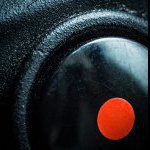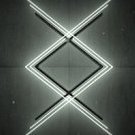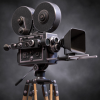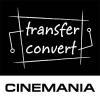Leaderboard
Popular Content
Showing content with the highest reputation on 05/21/2014 in all areas
-

Bell & Howell 16mm Anamorphic Lens
Bold and 2 others reacted to QuickHitRecord for a topic
PREFACE: I have been doing some testing with this lens for a while now, but lately I have been swamped with work. Also, there has been some sadness surrounding the girl who appears in the demo video (and several other anamorphic tests of mine), so anamorphic shooting has been on the back burner for a while now. But I'm seeing now that someone else has had the same idea, and is trying to make an unrealistic profit from it. And so I feel that I must post this write up, because this isn't a $1400 lens. The search for the perfect anamorphic lens is over (at least for me). Some months ago, I saw a post here from a member named frerichs. He claimed to have purchased a Bell & Howell 2x 16mm Anamorphic Projection lens (not the excellent Kowa model) for cheap and discovered that it was single focus, like the coveted Iscorama. I was skeptical, but since they can often be had for between $75 and $150 on eBay, I bought one to try out for myself. At first glance this lens does not look like a winner. It has neither the steam punk appeal of the Lomo square fronts, nor the timeless curves of the Iscorama. The impossibly long and narrow build of the lens suggests that this would never be viable match for anything but the longest taking lenses. And yet it works. The front element is a -7 diopter that focuses the other two elements in the housing as the head is turned, similar to the Iscorama. Unlike the Iscorama, the lens takes about five full rotations to go from infinity to close focus, which is limiting for practical use. But I have been working with a CNC machinist to resolve this, and I now have a prototype that allows me to do a full range rack focus in a one and a half turns: (Want to do this yourself? Ask a machinist to design a new front housing with a "multi-start thread" that will house the front diopter and screw directly onto the existing thread on the tube; this could also conceivably be done for Iscoramas to the same effect). We have also added a standard 58mm threading for easier filter mounting, and I've since installed a custom seamless ultra-wide delrin focus gear to add just a little torque for even easier focusing (not pictured). The Bell & Howell projection lenses that originally shipped with this lens were f/1.2 and f/1.4, so it is designed to be sharp at faster apertures -- and I find that it is. Perhaps not razor sharp, but as sharp as I'd ever want an anamorphic lens to be. And once you've removed the two limiting screws from the "head" of the lens, you can focus as close as two feet without diopters. Too much closer than that and the head will screw right off, but it's just as easy to screw right back on. Flaring is nice: The lens is not without its drawbacks. For one, it focuses to about 40 feet, not true infinity. That's not an issue for me, but it might be for some shooters. It's all-metal construction makes it a bit heavy which combined with its length will benefit from a lens support (which eliminates the shake that appears in my rack focus test). It vignettes when paired with wider lenses, so it is a better fit for smaller sensor cameras or Canon DSLRs with Magic Lantern raw crop mode enabled. For instance, I can shoot 1600x1200 with a Pentax Takumar 105mm f2.8 lens on my 5D Mark III and I don't see any vignetting before f/8. I also tested it with a Nikkor 50mm f1.8 AI-S on my GH2, and it was vignette-free so long as I cropped my 2x image down to 1.5x. So how does the footage look? Here's something that I shot with it: I am excited to add a sharp, easily rack-focusable, short minimum-focusing anamorphic to my arsenal. It won't be the right lens for every anamorphic user, especially those who want to be able to shoot as wide as possible, but for the price, it could make single-focus anamorphics more accessible to those who have not had a chance to work with them yet. Happy shooting!3 points -
Where is that Metabones EF-HB Speedbooster?! My dad has a set of Zeiss medium format glass gathering dust and I want this kind of image available to me!2 points
-
Everyone has a choice - one man wants ease of use, another man wants a particular quality of image (not a "better" one). There is no "better" technology in art! There is only the right tool for the job. Nobody tells me what camera is "best" for the film I want to make. That's up to me, and my film will succeed or fail on my choices. If we all made exactly the same films, with strict aesthetic criteria, we'd be living in a pretty awful (and dull) society. Try telling any professional painter or art historian that painting - the history of painting - is not hugely driven by technology! Paint is technology just like a camera is! It is a more basic technology, of course - but technology is almost by definition about advancement and increasing sophistication. Take two of the most famous periods in art history - the Renaissance and Impressionism. Both basically began due to advancements in oil paint "technology" - the realism of the Renaissance would not have been possible if it were not for the slow-drying qualities of oil paint (until then most painting was done with quick drying egg tempera). Impressionism quite literally only happened because of the invention of the paint tube!!! Before the invention and mass-production of the very affordable, very portable metal paint tube with a screw-on top in the late 1800's, it was a huge undertaking for anyone to take an easel out into the landscape, do a day's painting and then pack the paint you made yourself in a big tin away so the colour you want to use again tomorrow doesn't dry up! It might sound funny, but the invention of the paint tube was far, far more revolutionary than the day Canon put HD video on the 5D2. Without the paint tube Van Gogh would not have been able to afford paint or take his wide, rich palette of colours outdoors. Monet could not have painted so "fast and loose". Ditto Cezanne. As Renoir said - "Without tubes of paint, there would be no Impressionism"! ALL art is bound up with technology. All of it. You cannot separate the two things. Cameras and paint-boxes are not so different. We have very sophisticated technology now, but to say paint is not technology is simple ignorance. Affordable video ILC's's have made cinematic images available to almost anyone. They are todays paint tubes. This is not the time to say - "yes I have a kind-of cinematic camera, but the image is not quite up to "real" cinema standards - it needs to be "better" before I can compete with the gallons of dross Hollywood vomits on us every year." Now is the time to say, "Finally! I can make a film the way I want to! I don't give two sh*ts about whether it stacks up against the f***ing Alexa! I'm going to go out and do my thing. If it does what I want it to do then that's all that matters to me." "Better"!?! For F's F'ing sake! Seriously, I enjoy a bit of heated debate on this forum and genuinely get very valuable info here, but sometimes I wonder if half of you know what you have in your hands. Today NLE's can be put on any computer going; the internet is a readymade distribution network; video DSLR's give wonderful, creative images. It's genuinely revolutionary. Stories make the world go round. And all you can do is compare your tools to the Alexa and suck on Ridley Scott/Terrence Malick/[insert canonised director of your choice here]'s great big Cooke. The world is changing. Art is bound up in technology and revolution is bound up in art. Why can't we go out and tell our stories the way we want to tell them? If for you that's ultimately with an Alexa with a view to cinematic distribution, great - all power to you. But every representational system has its limitations. In 200 years time the Alexa will be as funny as a box of paints, for sure. I love the image from that camera, but don't bloody tell me that it's images are "better" than mine. "Better" at what? Resolution, dynamic range, colour? Yes, for sure. But if Upstream Colour had been shot on an Alexa, would it have been the same film? I really doubt it. That film is it's own thing in a way very, very few features are able to be. Did I do much pixel peeping while watching it? Personally, not much at all. If you need ergonomics and usability for what you want to do, great. If you want to sacrifice your creativity at the altar of ever-improving image quality, fine. But images are what they are made of as well as what they show us - as Marshall McLuhan famously said "the medium is the message". I'd like my message to be my own, and not translated into the fascistic hierarchy of aesthetics that rears its ugly head here pretty regularly. Note to dstillo: this rant is, , as usual, mainly directed at Andrew (who wrote the original response to me). I'm not really this mad at you :)2 points
-

Lenses
andy lee reacted to Shane Essary for a topic
Bit the bullet and finally just bought a used Voigtlander Nokton 25mm. I've really liked renting it in the past and found one at a decent price. I thought hard about the SLR Magic version, but I keep reading they're hit or miss on QA and I really don't have the patience shipping things back and forth in case I get the bad penny. At least there's a local Voigtlander dealer I can work with.1 point -
the iscorama 36 copes on 150mm. any wider and it vignettes. Just wish I had nice footage that I deem worth sharing. Will shoot in the next couple of days i promise. 40mm f4 for the wide angle is quite crazy on shots 1m and closer.1 point
-

Grading
PrebenR reacted to Christina Ava for a topic
stop the presses, before you grade read these two funny articles, theres a distinction to color correction and color grading. Color correction is all those subtle little corrections in your movie, correcting the exposure etc, grading is changing the complete look and feel of your film all mentioned in the excellent book by mr Hurken "Color Correction Handbook - Professional techniques for video and cinema" I love these articles because they point out a simple thing, today its movies that are not "graded" that stand out from the crowd. http://theabyssgazes.blogspot.gr/2010/03/teal-and-orange-hollywood-please-stop.html http://www.cracked.com/article_18664_5-annoying-trends-that-make-every-movie-look-same.html its nice to have a distintictive look, and currently i think its movies that dont look "graded"....1 point -

Lighting
Christina Ava reacted to jgharding for a topic
Here's an article on lighting for beginners I wrote about 3 years ago. http://www.soundonsound.com/sos/mar11/articles/light-fantastic.htm I've learned a lot since, but I still think this is a good starting point1 point -
I made this type of work during 15 days in Sicilia, with the GH4. Here's the equipement I used: The little Asus with 500Go was very useful, as well as the Nextodi storage (500Go) to empty my SD cards. The Manfrotto 391RC2 is light but not very useful for panoramic shots. You can read more infos here: http://www.5mars.com/2-trepied-et-sac-a-dos/ Here's my video "The Sicilian March": https://vimeo.com/94922357 Enjoy your travel!1 point
-
Everything about this video is totally unnecessary. The internet as a whole is stupider because of it, IMO.1 point
-

Must watch video on full frame vs crop cameras. "Full frame look" covered.
KarimNassar reacted to dishe for a topic
You're definitely on the right track, now. When you say the "crop sensor without speedbooster receives less total light as the full frame sensor", you are correct in that the area of light that falls outside the sensor is cut off. Technically, that is light that wasn't received. But the confusion here comes from the idea that this somehow effects the part of the image that IS being exposed in the middle. In the original diagram, those two beams of light that hit the full frame and crop are the same intensity. Those pixels will be exposed the same amount, assuming the sensor tech are similar enough. It just won't see what is beyond the borders of the frame, as it is cropped out. The ISO and Aperture did not change. The entire image got cropped instead. But, the focal reducer condenses the light into a smaller point, thus making it more dense and intensifying it. Here's a diagram I threw together: Note that as the beams spread out away from the lens, they get larger and less intense because the photons scatter. And in the second example, the resulting image is just a cut out of the full frame one above it. The intensity of light that is hitting the sensor in the middle is the same intensity of light that is hitting the middle of the full frame one. The exposure is the same, the FOV is same, but now we are only seeing part of the image as the rest was discarded outside the viewable area. The problem is, if I want to see the entire subject (a camera in this case), I need to back up now. And by backing up, I am changing the distance between me and the subject, which changes the DOF calculation as well. But it has not changed the aperture of the lens, it has only changed how I might intend to use it. The DOF caculation is the same math as it always was (aperture size and distance to subject = DOF), saying that the aperture has now changed will really mess with the calculation of DOF as well as exposure. It is wrong IMO to say that. If someone bought a crop sensor and wondered why their DOF appears to be different, they never really understood DOF in the first place. But note the bottom example, the focal reducer aims the beams of light together towards a smaller point of light. As they do that, they are less scattered and more dense, and thereby more intense. The resulting image that hits those photosites is therefore brighter as a result. The resulting image is therefore the same framing and DOF as the original on a full frame, however now it has the added side effect of being at least a stop brighter as well! To all those saying the math in the video appears to be correct: It may appear to have worked in his example, but its like saying that 2 * 2 = 4, therefore * means addition. Yes, in that case, the answer is correct (2+2=4), but not for the correct reasons. When you try to apply the same math to 3 * 3, your answer won't be what you expected it to be (according to the incorrect assumption, you might say 3 * 3 = 6, however those that understand that * really means multiplication will be expecting the correct answer of 9). His math may appear to work, but his explanation is patently wrong for it!1 point -

A7s, Depth-of-Field, and the Micro-4/3 Advantage
Gábor Ember reacted to JohnBarlow for a topic
Telephoto compression plays a major part, longer FL means less perspective. 'Equivalent focal length' seems to forget this. A zoom and dolly shot popular in movies of the 80s, keeping the same framing, illustrates this perfectly1 point -
Having just got my Speedbooster this week and from all my tests I would agree with Andrew on this. Sharper, faster, wider , to the naked eye it all loooks good! Im not bothered about issues of fringing; corners etc etc , if I have to actually go looking for it by zooming in , then its not really an issue for me etc ,,thats for pixel peepers in the real world it looks better ....so Im using it from now on.1 point



